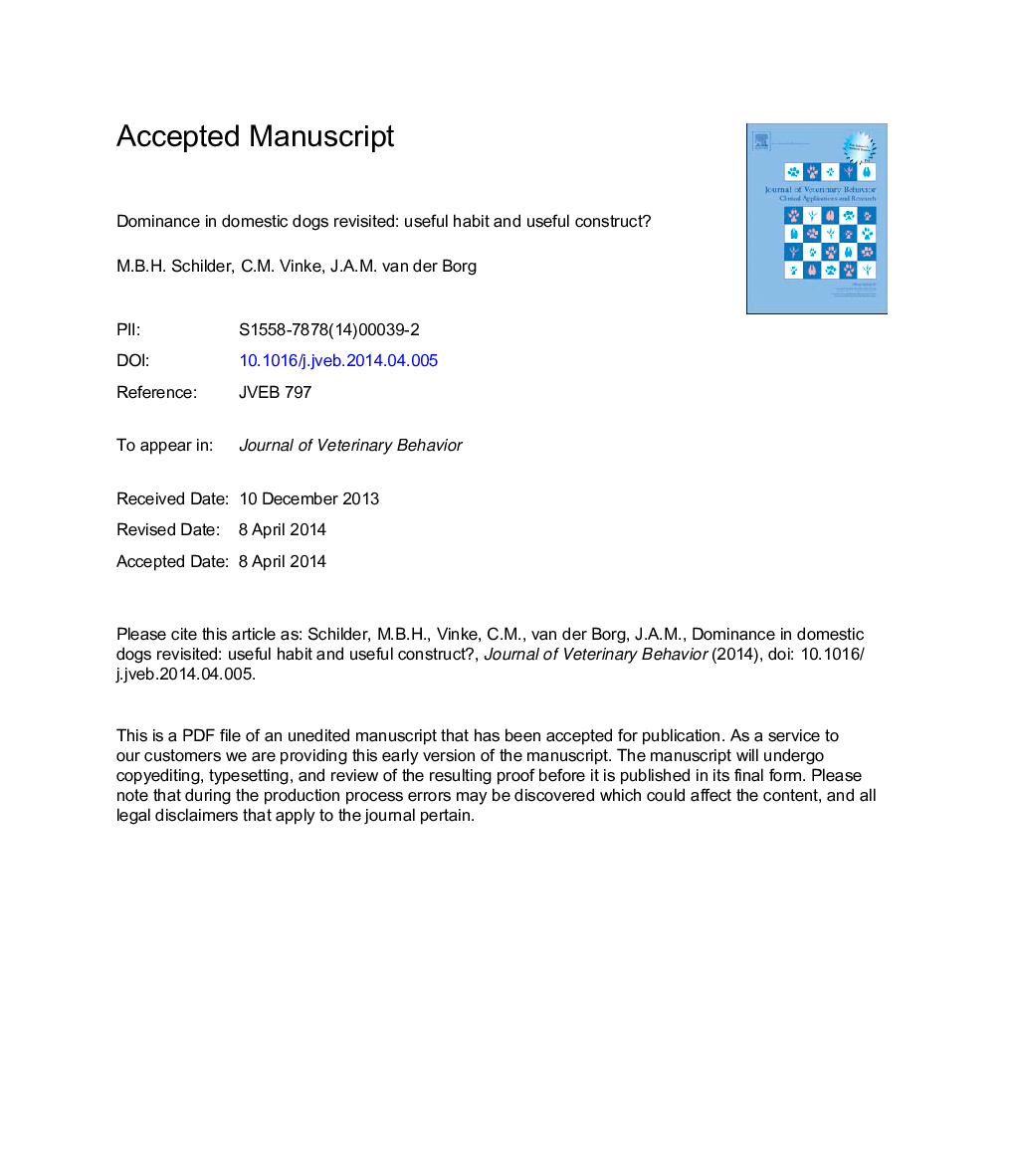| Article ID | Journal | Published Year | Pages | File Type |
|---|---|---|---|---|
| 10961832 | Journal of Veterinary Behavior: Clinical Applications and Research | 2014 | 21 Pages |
Abstract
In the last decade, the validity and relevance of the dominance model was regularly put into question regarding relationships between canids like dogs and wolves, and consequently, human-dog relationships as well. The concept underlying this model, scientifically defined as an intervening variable reflecting status difference between individuals, is applicable when formal status signals symbolize the long-term relationship between individuals, resulting in a formalized dominance hierarchy. This article reviews the basics underlying the concept of dominance and reflects on the value and importance of some new quantitative studies on the applicability of the concept of dominance in domestic dogs. The conclusions are, first, that formal dominance is present in the domestic dog, expressed by context-independent unidirectional formal status signals. Consequently, formal dominance (e.g., submission) plays an important role in assessing status in dog-dog relationships. Second, that nonverbal status-related communication in humans resembles that in dogs to a considerable degree, and hence dogs may be well able to interpret this human status-related nonverbal communication from their perspective. Dominance is therefore also likely to play a role in human-dog relationships. Hence, the dominance concept might be useful to explain the development of certain problems in dog-dog and dog-human relationships. However, enforcing a dominant status by a human may entail considerable risks and should therefore be avoided.
Keywords
Related Topics
Life Sciences
Agricultural and Biological Sciences
Animal Science and Zoology
Authors
Matthijs B.H. Schilder, Claudia M. Vinke, Joanne A.M. van der Borg,
